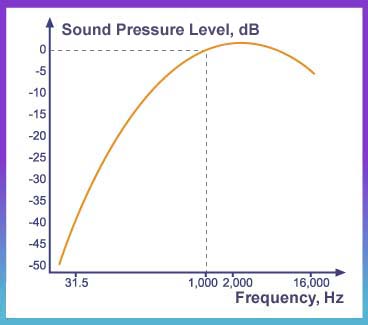When one plays a musical instrument, say a guitar, the vibrating chords set air particles into vibration. The vibration of air particles produces sound. Please click on the demo button to hear the sound.
Noise is unwanted sound. Noise can be produced by many sources - man's vocal cord, a running engine, a vibrating loudspeaker diaphragm, an operating machine tool, and so on. Click on the demo buttons and you will hear the noise from different sources.
There are two important characteristics of sound or noise - frequency and loudness.
Sound is the quickly varying pressure wave travelling through a medium. When sound travels through air, the atmospheric pressure varies periodically. The number of pressure variations per second is called the frequency of sound, and is measured in Hertz (Hz) which is defined as cycles per second. The higher the frequency, the more high-pitched a sound is perceived. The sounds produced by drums have much lower frequencies than those produced by a whistle, as shown in the following diagrams. Please click on the demo button to hear their sounds and the difference in pitch.
The response of the human ear to sound is dependent on the frequency of the sound. The human ear has peak response around 2,500 to 3,000 Hz and has a relatively low response at low frequencies. Please click on the demo button to see the details.
Another property of sound or noise is its loudness. A loud noise usually has a larger pressure variation and a weak one has a smaller pressure variation. Pressure and pressure variations are expressed in Pascal (Pa). To express sound or noise in terms of Pa is quite inconvenient because we have to deal with numbers from as small as 20 to as big as 2,000,000,000. A simpler way is to use a logarithmic scale. As such, the loudness of sound is commonly expressed in decibel (dB).

As mentioned earlier, the response of the human ear to sound is dependent on the frequency of the sound and this has led to the concept of weighting scales. In the "A-weighting" scale, the sound pressure levels for the lower frequencies and higher frequencies are reduced by certain amounts before they are being combined together to give one single sound pressure level value. This value is designated as dB(A). The dB(A) is often used as it reflects more accurately the frequency response of the human ear. A perceived loud noise has a high dB or dB(A) value and a soft noise has a low one.

( From http://www.epd.gov.hk/epd/noise_education/young/eng_young_html/m1/m1.html) |